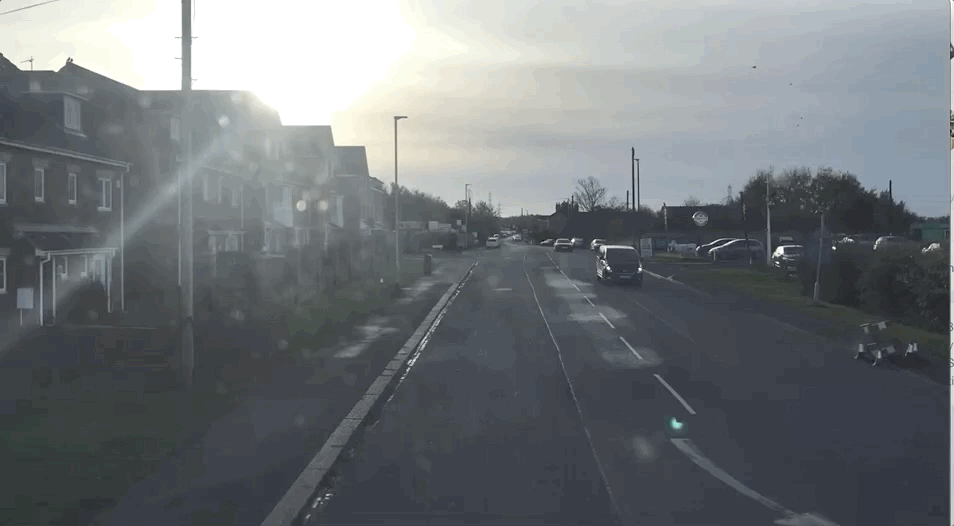This story originally ran on January 2019, but has been republished in light of the Marmot review into life expectancy released on Tuesday.
Sylvia and Carol seem remarkably similar – two women in their 60s, with glasses and short, neat blonde hair. We met both out walking their two dogs near their homes on a bright but chilly November afternoon.
Yet one of these women can expect to live a staggering 16 years longer than the other simply because of where she lives.
Sylvia and Carol don’t represent the north/south divide or the well-documented differences between people living in Wales and England – they live just a 21 minute bus journey apart.

“It’s really bad that just where you live can have such an effect that you can just move, barely three or four miles up the road, and live longer,” Sylvia tells HuffPost UK.
According to figures released by the Office for National Statistics (ONS) last year, women who live in the council ward of Cramlington North in Northumberland live 16 years longer than those in Cowpen, just down the road next to the port town of Blyth.
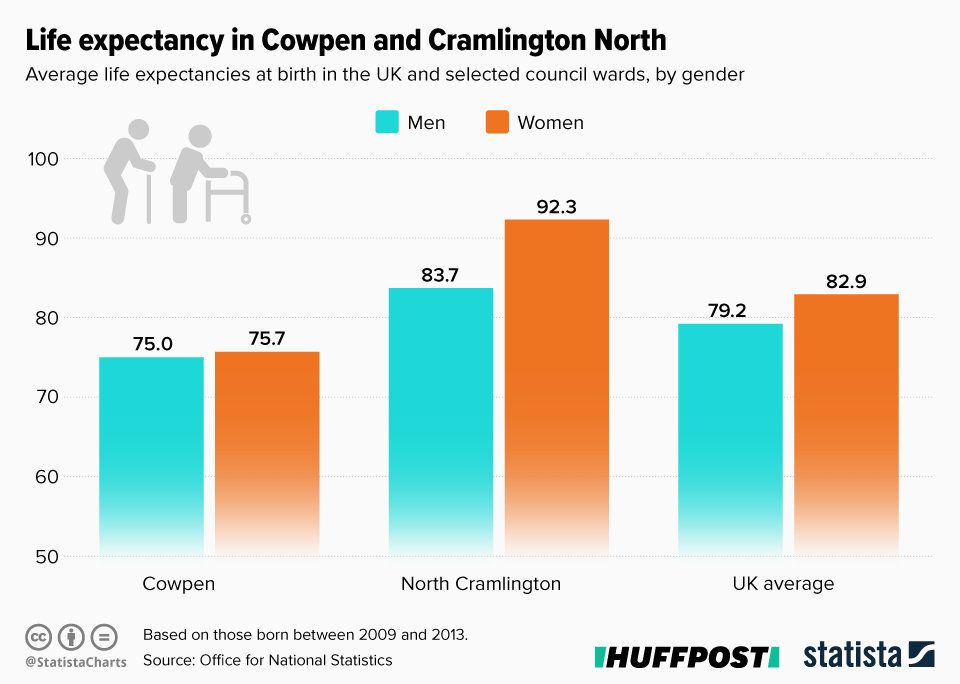
On the face of it there’s an obvious reason for the gap. Based on the latest Public Health England reports from 2015, Cowpen ranks way above the national average for three major measures of deprivation - people’s income, child poverty and the number of elderly people in poverty.
In stark contrast, despite being just a 20 minute drive away, North Cramlington barely registers on any.
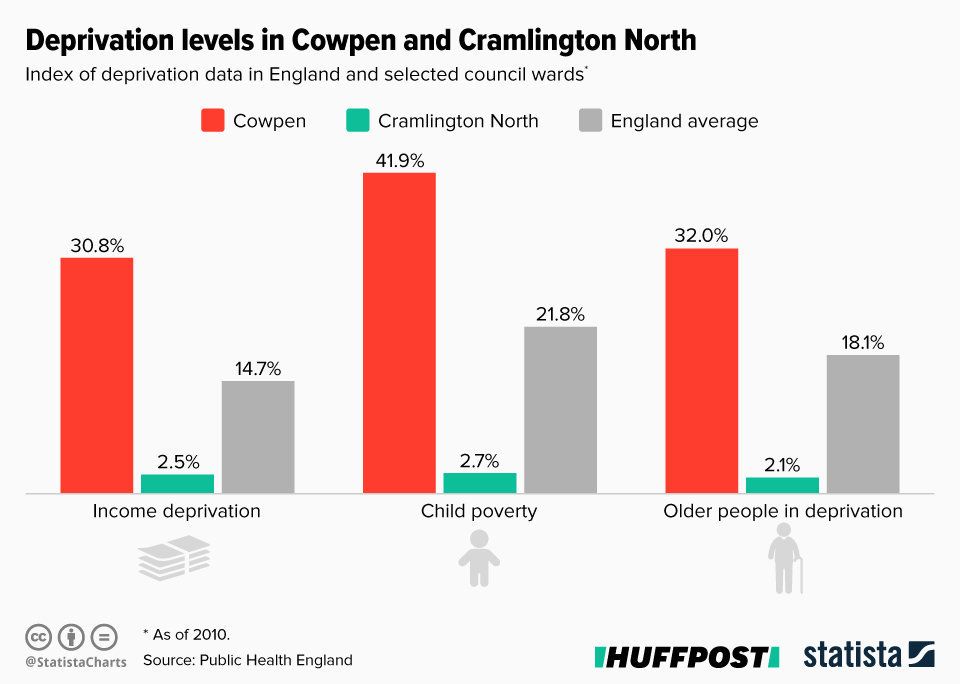
But talking to residents of these two areas shines a light on the reality behind the statistics, a more complex picture tainted with whisperings of drugs, alcohol and domestic violence.
The X8 bus to Newcastle links Cowpen and Cramlington, a short journey that meanders past smart copy-and-paste housing estates and the rolling countryside that makes Northumberland so loved by birdwatchers and hikers.
Cramlington North is almost entirely residential, large and modern detached houses, loosely spaced in cul-de-sacs branching off from the narrow Horton Burn waterway.
Officially at least, it’s an urban area but “urban” in this part of Northumberland means you don’t live in the countryside but you can see it from your kitchen window.
It’s a place where every residence seems to have two garages and maybe even a conservatory.
Front and back gardens come as standard and if these aren’t big enough for your kids’ football team to practice, the playing fields are a short stroll away.
And a four-bedroom slice of this family utopia costs just £260,000.

Carol is a long-time resident. “I love it here, my son and daughter live here too with their families. I’ve been here over 30 years,” she tells us.
“I’ve never seen or heard anything about drugs around here. Schools are great and five minutes away.
“There’s a bowling alley, a cinema - but I guess it’s what you can afford to do.”
Over in Cowpen the houses are smaller. They come in pairs or terraces and cars are parked on the street.
A two-bedroom house costs the same as a deposit for a central London flat – around £75,000.
Sylvia tells us she likes where she lives: “It’s quiet and there’s no bother and I get out with the dogs.”
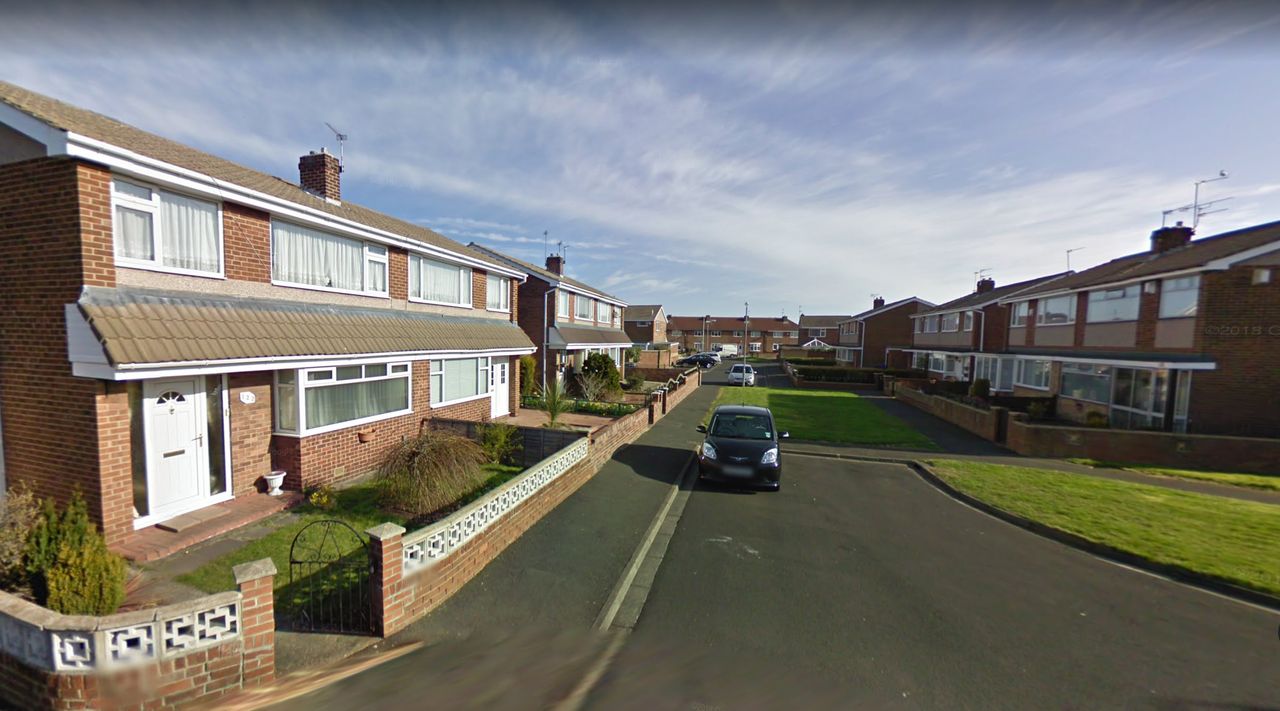
One of the stops on the X8′s route is “Cowpen Shops”, a generous title for a squat row of four buildings containing a tanning salon, bookmakers, a Boots and a take-away.
Just up the road there’s also a Best One convenience store and its owner, 31-year-old Harvey Singh, thinks he has a remarkable insight into the health of the area’s residents.
The link between diet and life expectancy is well-established – eat more fruit and veg, drink in moderation and avoid processed foods are the mantras of today’s health professionals.
“It’s rare someone will come in and say ‘have you got any apples?’, Singh tells HuffPost UK.
“I would say out of all the customers we get, we get maybe two a week who ask for fruit or smoothies. We used to get loads of fruit and veg but people just don’t eat it as much and we’ve stopped getting it in - we ended up just chucking it out, it was going off.”
Chatting to us while serving a steady stream of people, Singh tells us about the most common items he sells: “They just get their cans, get their tabs [cigarettes], put the lottery on and that’s it.”
“And we sell a lot of energy drinks, a lot. We sell about 20 cases a week of the pomegranate Rockstar drink - just that one flavour.”
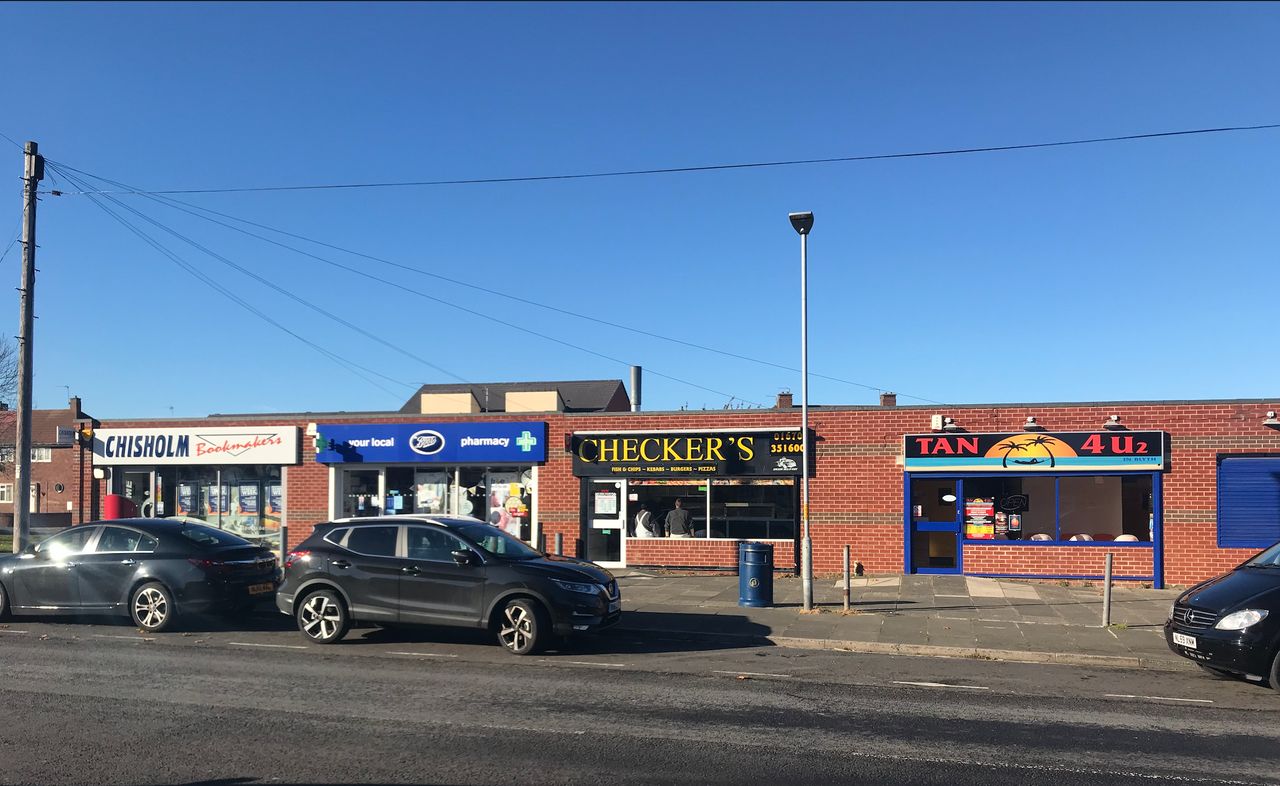
Cowpen is part of Blyth, a town built on the industries of coal and ship-building, and the demise of both has had a profound effect on the area.
Shipyards that helped win both world wars by filling orders from the Navy closed in the 60s but were offset to a degree by the opening of two massive coal power stations in 1958 and 1962.
Blyth port was exporting six million tons of coal a year. Then pits across the UK closed, and the demise of the north-east’s industrial heart began.
The power stations were demolished in 2003 and the port has had to reinvent itself a number of times, turning from coal to aluminium to paper exports and, in its present-day state, focusing on wind turbine components.
Throughout this tumultuous period, unemployment and deprivation levels rose in Blyth, reflecting a trend for the north-east as a whole.
By the early 90s the town had been dubbed the drugs capital of the UK after heroin claimed the lives of a string of young people. A BBC Panorama episode in 1997 chronicled the tragedies.
During the program’s intro, presenter Steve Bradshaw, said:
“This is a story about Blythe Valley, a quiet place by the sea where parents are three times as likely to lose children to drugs as in the rest of Britain. Like many other ports Blythe’s long had a drugs problem. In the eighties it was Cannabis and Heroin. Then in the nineties came a vogue for whole cocktails of drugs, including prescription drugs from the NHS.”
Although action was taken to tackle the problem, there are fears it may be returning as austerity disproportionately hits the region.
“Yes, there could be drugs over in that area over there,” Syvia says, pointing to a housing estate up the road. ″We don’t see much of it here but I know Blyth is one of the worst in England for drugs. Whether it’s still like that, I don’t know.”
“Blyth used to be pits and fishing so a lot of the areas aren’t as new as Cramlington. There’s certain parts in Blyth now I wouldn’t dream of living - you just need to walk up there.”
“Up there” is a small playground we meet 30-year-old Ashleigh Cato, taking some time out as her two small children are occupied on the swings.
“Every town has their rough areas and people take drugs and there’s alcoholics and stuff like that. There’s a bit of that around here but you get that in every town,” she tells HuffPost UK.
“It’s scary isn’t it, that living three miles away could extend your kids’ life. I’ve never really thought about it.”

Another visitor to the park, who declines to give their name, overhears our conversation and offers their own, far darker assessment of why women have shorter life expectancies in Cowpen.
“Probably because there’s more junkies, drink and domestic violence, people killing themselves,” she says.
“Women taking their own lives because they can’t face the men they’re with.”
Another person who didn’t want to be named, told HuffPost UK: “Drugs is major trouble around here, every kind you can think of. It’s horrendous - crack, cocaine, ecstasy, weed.
“There’s been a lot of deaths recently and we’ve known them personally and it’s been branded as mental health but it’s not, it’s cocaine abuse.
“They don’t want people to realise how bad it is here.”
Speaking to the authorities in the area gives two subtly different explanations for what’s going on.
We asked the Labour Blyth Valley MP, Ronnie Campbell, if drugs could be a factor in the huge discrepancy in life expectancy.
In an email, he said: “Blyth has the same problems as any other town with drug problems. The biggest problem in Blyth is alcohol, and that is legal”.

But Campbell’s claim is at odds with official figures – the North-East has the highest rates of drug-related deaths in the UK, over three times higher than in London and nearly twice as high as the national average.
HuffPost UK also spoke to a GP in Cramlington. Dr Paula Batsford acknowledged the role drugs play in the two towns as well as the added complications they present to health professionals.
She said: “Blyth is a very different demographic to Cramlington, that will definitely be playing a role.
“They have a larger problem with illicit drug use and overuse of prescription medication as well, much more than we do in Cramlington.
“Obviously people that have those difficulties are less likely to seek help for other health conditions and equally they might get overlooked because the pressing issue is their drug-seeking behaviour, rather than anything else.”
Of course diet and lifestyle are the main factors contributing to what Dr Batsford describes as the biggest problems GPs in the area see – “higher levels of diabetes, respiratory problems, cardiovascular problems”.
Stopping smoking, drinking less and getting more exercise are, and have been for years, the messages at the forefront of national health campaigns.
But an anecdote from shop-owner Harvey Singh, suggests they simply aren’t getting through, particularly in Cowpen.
“About 15 years ago when tabs were three quid for 20, I used to tell my customers they’ll be ten quid one day and they’d say ‘aye, but I’ll have quit by then,’” he says.
“They’re still coming in for their tabs.”
